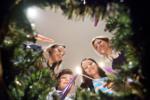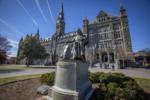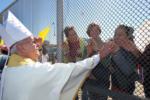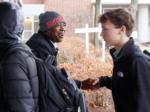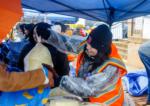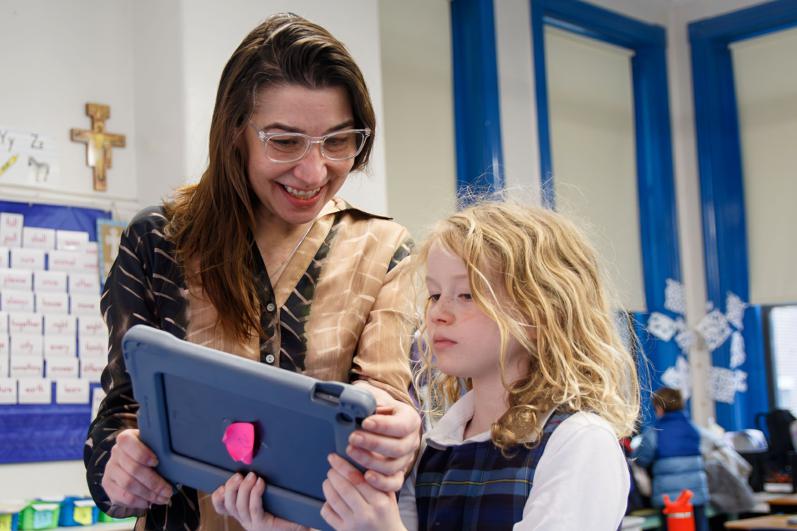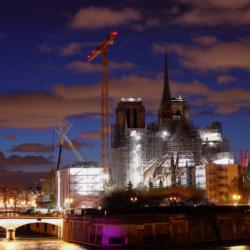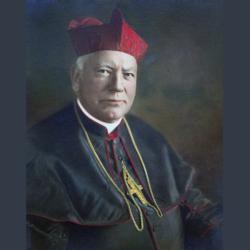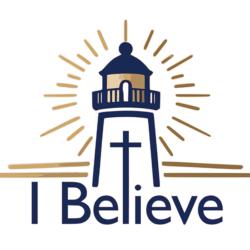Forming the Future: Technology educator Barbara Mikolajczak inspires students at St. John School, North End
BOSTON -- At first glance, St. John School, located in the heart of Boston's North End, looks like any other historic Catholic school.
The school was founded in 1895 and is currently located in a red brick building that was once a warehouse. Rose Kennedy attended school there, across the street from where she was born. Inside, St. John School is a labyrinth of classrooms and passageways, representing over a century of construction and renovation. There's always something new to discover -- when workers recently tore down a wall, they found a long-hidden girls' staircase. When Barbara Mikolajczak became St. John School's director of technology and innovation in 2020, she would get lost frequently.
"It really is this hidden gem with a crazy amount of history," Mikolajczak told The Pilot in a March 5 interview.
The school's interior is as classic as its exterior: Blue and black checkerboard floors, statues of Jesus and Mary. The walls are covered in black-and-white photos showing sisters in habits and rows of girls in white First Communion gowns. What happens within the classrooms, however, is anything but traditional. In a hydroponics room, students grow crops in futuristic-looking vertical white cylinders. When the food is ripe, they donate the harvest to local food banks. The second graders are preparing for their First Communion by using iPads to code animations of themselves receiving the sacrament.
"We're doing you making Communion, so you can't be on a bicycle," Mikolajczak had to explain to one student animator.
Mikolajczak noticed that students often forget to bow at their First Communion, so "instead of just nagging them" she decided to have them program a virtual First Communion to memorize the process. Second graders previously programmed animations of Christ rising from the dead and St. Patrick driving the snakes out of Ireland.
"I am slightly obsessed with history and technology," Mikolajczak told The Pilot, "which is an unusual combination."
For someone who works at St. John School, it's the perfect combination. Technology and computers play a role in the education of all 172 students from kindergarten up to eighth grade. From the beginning, students are taught digital citizenship -- how to use the internet responsibly. Mikolajczak teaches students about TikTok and other forms of social media, "and what it is doing to the young people's mindset." Her sixth graders are currently writing a Wikipedia article about St. John School, a way to not only teach them about its history but to get them to think critically about where information online comes from.
"I'm not trying to make everyone a coder," Mikolajczak said, "but everyone is going to use a device as they get older."
She has found that technology enhances and enlivens teaching about logical thinking, social studies, math, science, and religion. The sooner children start using technology to learn, she said, the more likely that they will see learning as fun and not a chore. Students cheer when she walks into classrooms. When the second graders see her, they start chanting coding vocabulary at her.
"What teacher gets hugged when teaching programming?" she said. "It's purely creative and enjoyment for them."
The school's location in Boston means that students have access to many technological opportunities. Mikolajczak is on the Boston Museum of Science Educator Committee and gave feedback on "Roblox: Mission to Mars," an educational video game made in collaboration with the Museum of Science. Thanks to her, St. John School was one of only two schools in the world to test the game and aid in the design process.
"It was great, obviously, for me, but imagine being 10 years old and finding out you get to do Roblox in school," Mikolajczak said. "I was a hero!"
She had to explain the project to the parents, so they wouldn't be upset when the students told them that they spent all day in school playing video games. The game wasn't just a way to teach kids about engineering and spaceflight. It was also a glimpse at how computer programs go from idea to reality.
"The kids get to be part of the process," Mikolajczak said. "They also see that it doesn't necessarily have to be technical."
Trivium Interactive, a company which makes exhibits for museums like the Museum of Science, has its headquarters blocks away from St. John School. Students get to visit the headquarters and test the exhibits as they go from the prototype stages to the final product. Such hands-on work shows students that designers and artists are just as important as engineers. Along with teaching them about computer programming, it teaches them that it's okay to make mistakes and revisions when trying something new.
Case in point: True Robotics, a robotics program from the Worcester Polytechnic Institute that St. John School students got to pilot test. The Archdiocese of Boston gave the school funds to purchase the technology in 2023.
"I'm a really big proponent of pilot programs so that the kids can give feedback," Mikolajczak said, "and it's a lot less expensive."
Sixth-grade students use True Robotics to build radio-controlled cars and control them with "off-brand PlayStation controllers." Unlike LEGO robots, which the school also uses, True Robotics devices don't always work the first time around.
"We learned how to trial and test it," sixth grader Dilan Tsakalidis told The Pilot, "because a lot of times it wouldn't work. So, we had to make solutions."
Dilan and seventh grader Mike Tinelli built a purple radio-controlled car together and christened it Lando. They showed Lando off to the fourth graders and drove it around their classroom, which has a clear view of the Paul Revere House. Some of the fourth graders were spooked by Lando, while others giggled, cooed, talked to it, and petted it like a puppy. Mikolajczak was impressed that Lando was able to drive on carpet.



